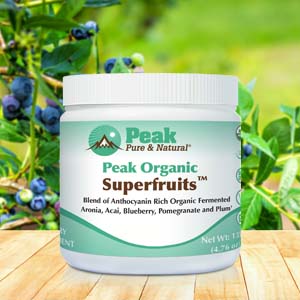Get Easy Health Digest™ in your inbox and don’t miss a thing when you subscribe today. Plus, get the free bonus report, Mother Nature’s Tips, Tricks and Remedies for Cholesterol, Blood Pressure & Blood Sugar as my way of saying welcome to the community!
The statin that raises your risk of diabetes and cataracts

When my mother’s doctor told her she would have to start taking a statin to lower her cholesterol, I balked. True, her cholesterol was high, but not dangerously so.
She doesn’t even have diabetes or heart disease or a family history of very high cholesterol, which are the categories of patients Dr. Elizabeth Klodas places on statins.
Still, she listened to her doctor and went on the medication. And she promptly began experiencing one of the side effects: severe muscle pain. She stopped using it and decided to go the diet and exercise route instead, with great results.
The muscle pain would have been reason enough to be anti-statins. But these medications can have other, even more dangerous side effects, such as kidney damage and cataracts. And they can double your risk of dementia and triple your risk of diabetes.
The fact that statins raise your risk of diabetes is somewhat of a merry-go-round, considering that you’re taking statins to protect your heart health while diabetes can destroy it. This is one ride no one wants to take….
The distressing difference in rosuvastatin
Researchers conducted a secondary analysis of the LODESTAR trial conducted in South Korea between 2016 and 2019. They were looking to compare the long-term efficacy and safety of two statin drugs, rosuvastatin (Crestor) and atorvastatin (Lipitor), in adults with coronary artery disease (CAD).
Regardless of which drug they were randomized to, people with existing CAD showed no statistically significant difference in incidence of 3-year combined all-cause death, myocardial infarction (MI), stroke and coronary revascularization. In other words, both drugs were equally effective.
However, they did discover something alarming about one of the drugs…
The group taking rosuvastatin had a higher incidence of new-onset diabetes requiring them to start diabetes medication than the group taking atorvastatin (7.2% versus 5.3%). The rosuvastatin group also had a higher rate of cataract surgery than the atorvastatin group (2.5% versus 1.5%).
The researchers weren’t clear on how a particular statin could be tied to new-onset diabetes. However, they did say the excess cataracts could be related to rosuvastatin’s more potent LDL cholesterol-lowering power. This can prevent epithelial cell development within the crystalline lens, where cholesterol biosynthesis is critical to maintain transparency and structure of the lens.
What that means is this: the body appears to need some cholesterol to keep the lenses of the eyes clear and healthy — just as it does to maintain a healthy brain and support production of vitamin D and some hormones — and rosuvastatin may not be leaving the body enough to work with.
Inflammation could be bigger contributor
The researchers emphasize that rosuvastatin’s greater LDL lowering strength didn’t translate to fewer clinical events. Recent evidence suggests that in people already taking statins, inflammation is a bigger contributor to cardiovascular risk than cholesterol. And statins do lower that inflammation along with cholesterol.
“Therefore, when using rosuvastatin over atorvastatin as a statin regimen in people with coronary artery disease, a greater reduction in LDL cholesterol levels can be expected; however, meticulous monitoring and appropriate lifestyle interventions should be considered to mitigate the risk of new-onset diabetes mellitus or cataracts,” the researchers wrote.
Further investigation is still needed to determine whether there’s a direct relationship between new-onset diabetes and cataract surgery and rosuvastatin. If there is, investigators also would need to explore the underlying mechanism for those connections and the possible mechanism for a drug effect.
Eating less cholesterol only half the battle
If you’re already taking a statin, don’t stop. You should always talk with your doctor before making any changes to medication.
However, if you want to lower your LDL cholesterol without having to take a statin, there are three things you need to do: follow a healthy diet, get regular exercise, and maintain a healthy weight. The third usually follows the first two, so focus on diet and exercise and you’ll be in good shape (literally and figuratively). Plus, you’ll be controlling inflammation at the same time.
You may think that to control LDL, you must stay away from foods high in fat and cholesterol. While it does help to lower dietary cholesterol and reduce saturated fat, especially trans fat, it’s more important to decrease the amount of simple/processed carbohydrates and super-starchy foods you eat. These simple and processed carbs end up spiking insulin levels, which signals your body to hold on to LDL cholesterol. They can also cause inflammation.
Does this mean going on a low-carb diet? Dr. Klodas cautions against that. Instead, she recommends a balanced diet with plenty of fiber and plant sterols to help control LDL. Plant sterols are found in fresh fruits and vegetables as well as nuts and seeds. And fiber is found in most fruits, vegetables and nuts as well as psyllium husks, bran and beans and legumes.
Some fruits and vegetables are also rich in lutein and zeaxanthin.
“There is an overwhelming amount of evidence to show that lutein and zeaxanthin play a protective role in helping to protect the eye against cataracts and macular degeneration,” said Steven G. Pratt, MD, an assistant clinical professor of ophthalmology at the University of California.
Follow these seven tips to avoid cataracts.
Editor’s note: There are perfectly safe and natural ways to decrease your risk of blood clots including the 25-cent vitamin, the nutrient that acts as a natural blood thinner and the powerful herb that helps clear plaque. To discover these and other secrets of long-lived hearts, click here for Hushed Up Natural Heart Cures and Common Misconceptions of Popular Heart Treatments!
Sources:
Highly Potent Statin Stands Out for Diabetes, Cataract Risks — MedPage Today
Statin Users Show LDL Doesn’t Come Close to Telling Whole Story of ASCVD — MedPage Today














